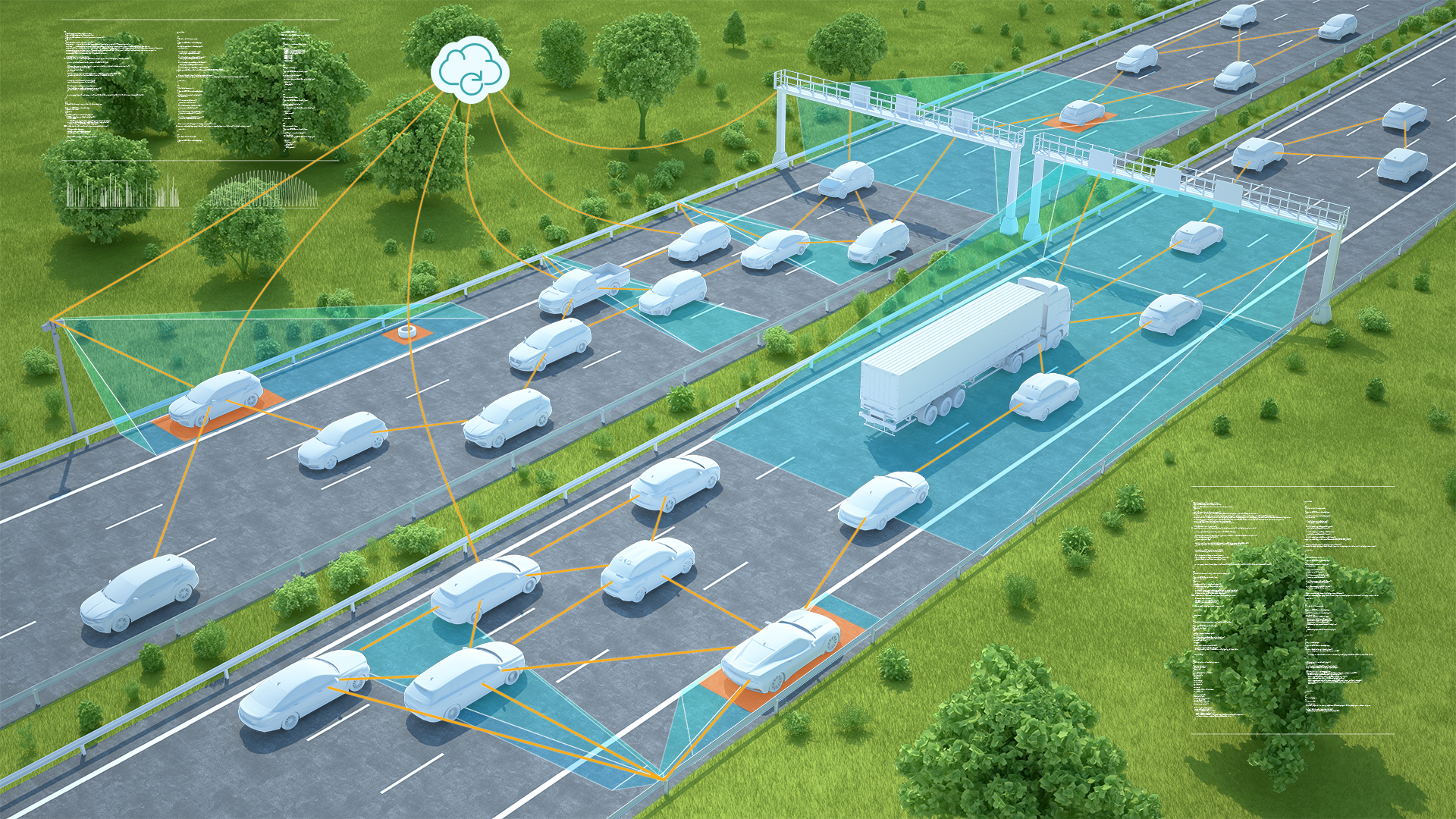Highway harmony: Future-ready roads for better transportation

Due to rapid population increases around the world, commutes that would normally take 20 minutes have turned into a patience-testing 2 hours. This intense road congestion has led city officials to start looking for smart solutions that can offer citizens reprieve from roadway deadlocks. One approach that has people talking is smart motorways. These intelligent roads employ traffic management methods to enhance traffic flow and minimize congestion, especially in densely occupied areas.
In a recent article, TU Automotive examines the challenges and opportunities in making vehicles smarter, emphasizing the need for a balance between vehicle and infrastructure intelligence to enhance road safety and traffic management. In this blog, we’ll discuss the various dilemmas and opportunities the automotive industry faces in delivering smarter and safer vehicles and roads to the public.
Connected and autonomous vehicle technology
AV technology has made tremendous progress over the last decade. It’s now common for vehicles to have level 2 autonomy that uses advanced driving assistance (ADAS) to take partial control of steering, acceleration and braking. Vehicles with level 3 autonomy are equipped with environmental detection monitored completely by automated systems. While vehicles with level 3 autonomy aren’t cruising the roads quite yet, they will rely heavily on sensors to provide feedback from the surrounding environment.
At these levels, vehicles will operate with minimal human intervention, particularly on highways, thanks to high-definition mapping that generates a real-time 3D map of the car’s surroundings. This map becomes a crucial reference point for autonomous driving algorithms, using on-board sensor data to update the map and let other vehicles know if there is an unexpected change in the environment. Manufacturers are already relying on these pre-mapped roads for their vehicle’s systems to function reliably. This necessitates data exchange between the roads and the cloud in real-time and for advanced infrastructure and algorithms to process data and provide feedback to the vehicle.
Some manufacturers are labeling this approach “Big-Loop” data, capitalizing on the expanding intelligence of connected vehicles. However, challenges related to infrastructure and automaker ecosystems can sometimes impede integration, underscoring the need for a strategic application of this technology both for the vehicles and the road infrastructure.
Both internal and external data sources are key to enriching the overall traffic experience, as they can help vehicles identify and avoid congested areas, road obstructions and other highways events by communicating with the road and other vehicles. Some approaches and practices that cities are adopting to deploy smart motorways include:
- Variable speed limits: Utilizing digital signs to display variable speed limits based on traffic conditions, weather or accidents to help with traffic flow
- Incident detection and response: Installing sensors and cameras to quickly detect accidents or breakdowns, enabling prompt responses
- Data analytics and predictive modeling: Using data to anticipate traffic patterns to develop proactive traffic management strategies
This highly interactive ecosystem of vehicles, highways and the environment will be necessary for AVs to operate autonomously yet safely.
Smart motorways and infrastructure challenges
Though smart motorways appear to be the answer to traffic movement issues, they struggle to gain public trust. Particularly in the UK, many view these highways as both impractical and perilous, citing instances of prolonged traffic jams, and accidents caused by the absence of a hard shoulder for vehicle breakdowns. This has sparked questions about the true intelligence and safety of future autonomous vehicles (AVs).
In addition to wariness from the public, smart motorways face another critical obstacle: time. Because AV technology is evolving and advancing at such a quick rate, by the time the infrastructure for smart motorways is developed, it is typically outdated and requires newer solutions that connect better with vehicles.
The delay in implementing infrastructure technology creates a challenge for vehicle-to-infrastructure (V2I) communication. The slow rollout of infrastructure technology hampers the incorporation of infrastructure sensors or data into AVs at present—resulting in disjointed communication between AVs and their surroundings.
Furthermore, this timing dilemma leads to a potential mismatch between the capabilities of AVs and the supporting infrastructure. To address this, a synchronized and agile approach is essential, ensuring that both AV technology and smart motorways evolve together. If smart motorways and AV technology can begin to align, then highways could reap benefits such as consistent travel times, lower CO2 and improved traffic while also restoring public trust in the future of mobility.
The future of intelligent transportation
Achieving a more intelligent automotive future demands a delicate balance between advanced vehicle technology and smart infrastructure. Smart motorways show promise in alleviating traffic woes, yet public skepticism raises valid concerns about the safety of these roads and the autonomous vehicles that will inhibit them.
Siemens is partnered with the American Center of mobility (ACM), a company dedicated to testing technologies and fostering innovation within the automotive industry. Together, Siemens and the ACM are working to assess potential mobility solutions that will create safer and smarter roads and AVs. Progress in AV technology, marked by varying levels of autonomy and reliance on mapping and sensors, hints at a future with reduced human intervention on the roads. This will require efficient data exchange and integration between vehicles and infrastructure for safe autonomous driving. Synchronizing the evolution of AV technology and smart motorways will not only enhance the safety of roads but will also help the public gain confidence in the safety of AVs, charting a course to a more efficient automotive future.
Siemens Digital Industries Software helps organizations of all sizes digitally transform using software, hardware and services from the Siemens Xcelerator business platform. Siemens’ software and the comprehensive digital twin enable companies to optimize their design, engineering and manufacturing processes to turn today’s ideas into the sustainable products of the future. From chips to entire systems, from product to process, across all industries. Siemens Digital Industries Software – Accelerating transformation.


